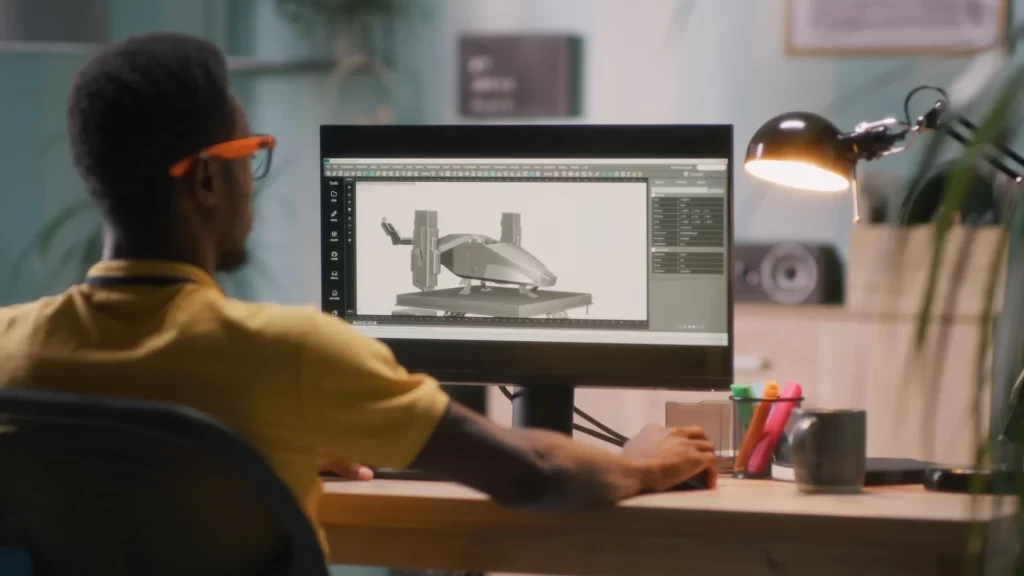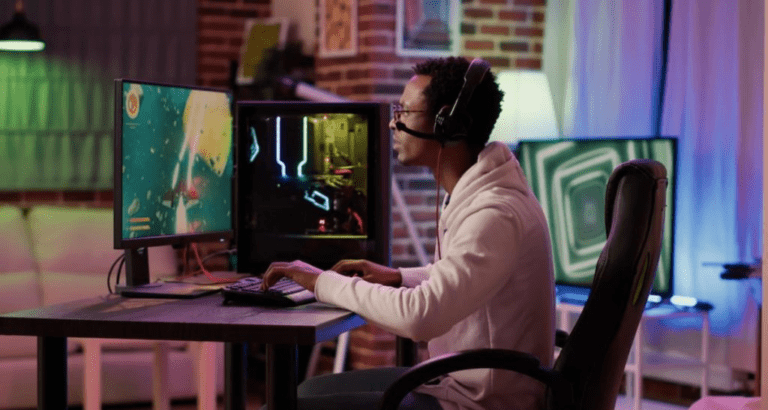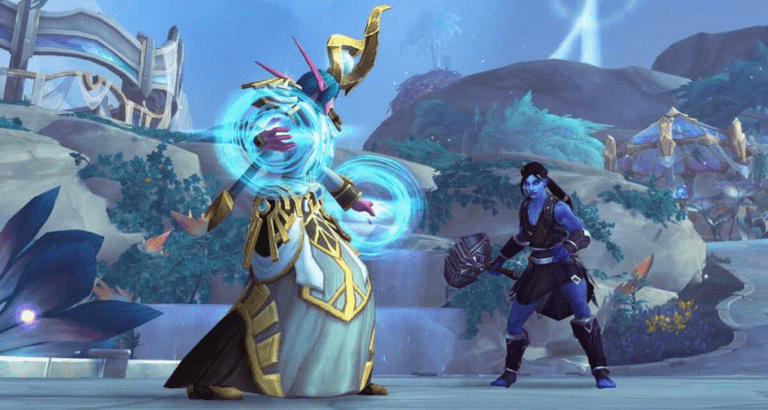Video games have become one of the most influential forms of entertainment in the modern world, blending art, technology, and storytelling into immersive experiences. But behind every captivating game lies an intricate design process that demands creativity, technical skill, and relentless problem-solving. So, is video game design hard? The answer isn’t as simple as a yes or no – it depends on various factors, from the complexity of the project to the skills of the team behind it.
This article explores the challenges of game design, the skills required to succeed, and how aspiring designers can navigate this competitive yet rewarding industry. Gain some insights into what makes video game design difficult, the common hurdles new developers face, and how professional studios like us at Main Leaf tackle these obstacles alongside you to deliver high-quality gaming experiences!
Read as well: 5 key roles in a game development team
What is video game design hard?
Let’s paint the picture first: game design is the process of creating the rules, mechanics, story, and overall player experience in a video game. Unlike game development, which includes programming and asset creation, design focuses on how the game functions and feels.

This means a game designer must balance creativity with technical constraints, ensuring that gameplay is engaging, intuitive, and bug-free. This requires a deep understanding of player psychology, level design, narrative structure, and even mathematics for mechanics like physics and progression systems.
Is video game design hard? The core challenges of game design
When aspiring designers wonder whether video game design is hard, they’re often imagining the creative thrill of bringing worlds to life. The reality, however, involves navigating a maze of technical, psychological, and logistical challenges that separate concept from execution. Game design isn’t just about dreaming up mechanics – it’s about making them work within real-world constraints while keeping players engaged.
Here’s a deeper look at the core hurdles that make game design so demanding.
1. Balancing creativity and technical constraints
Every game designer starts with a vision – a sprawling open world, a revolutionary combat system, or an emotionally gripping narrative. But ambition often collides with reality:
- Hardware limitations: A graphically intensive game might run beautifully on high-end PCs but struggle on consoles or mobile devices, forcing designers to scale back effects or optimize aggressively.
- Budget and time restrictions: Even the most innovative mechanic must fit within production timelines. A studio might dream of destructible environments, but if the physics system is too costly to implement, it gets cut.
- Engine capabilities: Not all game engines support every feature natively. A designer’s perfect lighting system might require custom coding, adding weeks to development.
For example, an indie team designing a procedurally generated dungeon crawler might need to simplify enemy AI to meet performance targets, while a AAA studio working on a narrative-driven RPG could scrap branching dialogue options due to voice-acting costs. The constant negotiation between creativity and feasibility is why video game design is hard – it’s not just about ideas, but their execution.

2. Player-centric design
A game can seem flawless on paper, but players expose its weaknesses quickly. This is why player-centric design is both vital and exhausting:
- Playtesting reveals flaws: A puzzle that seems logical to designers might stump players because of unclear visual cues. A combat system that feels balanced internally might be frustratingly difficult for newcomers.
- Iteration is unavoidable: Designers might rework a level a dozen times—adjusting enemy placements, tweaking difficulty curves, or redoing tutorials—before it feels “right.”
- Subjectivity adds complexity: One player loves a challenge; another quits in frustration. Striking the right balance requires data (analytics) and empathy (understanding player psychology).
Consider a platformer where testers repeatedly miss a critical jump. Is the gap too wide? Is the character’s movement too floaty? Or is the camera angle misleading? Solving this isn’t just about fixing one element; it’s about diagnosing how all systems interact, which is why video game design is hard even for seasoned professionals.
3. Interdisciplinary collaboration
Game design is a team sport, and missteps in collaboration can derail projects:
- Aligning visions: Artists might imagine a dark, gritty aesthetic, while designers want vibrant colors for gameplay clarity. Writers could draft elaborate lore that programmers can’t integrate smoothly.
- Technical jargon barriers: A designer asking for “more impactful hit reactions” might mean animation feedback to an artist but screen shake to a programmer. Without clear specifications, revisions waste time.
- Dependency deadlocks: Level designers can’t finalize layouts until environmental artists deliver assets, who are waiting on concept art. Delays cascade.
For instance, in a multiplayer shooter, a designer’s request for “better netcode” might lead to programmers optimizing latency – but if the underlying issue was actually animation sync, the “fix” does nothing. Avoiding these pitfalls requires precise communication, documentation, and sometimes compromise – another reason video game design is hard.
The skills needed to succeed in game design

Given these challenges, is video game design hard for everyone, or just for those unprepared? The truth is, while game design is demanding, having the right skillset can make the process smoother.
Technical proficiency
While not all designers need to code, understanding programming basics helps in communicating with developers and troubleshooting design issues. Knowledge of engines like Unity or Unreal Engine is a huge advantage, allowing designers to prototype ideas quickly.
Creativity and problem-solving
Designers must think outside the box to create unique mechanics while solving unexpected problems. A puzzle that seems fun on paper might break in practice, requiring quick adjustments without compromising the experience.
Understanding player psychology
Great designers know what makes players tick. They study engagement patterns, difficulty curves, and reward systems to craft experiences that feel satisfying rather than frustrating. This requires both analytical thinking and empathy.
Project management
Since games are complex projects with many moving parts, designers must manage timelines, delegate tasks, and ensure the team stays on track. Poor planning can lead to crunch time – a notorious issue in the industry.
Common misconceptions about game design

When discussing whether video game design is hard, several myths often cloud the conversation. Some believe that playing a lot of games automatically makes someone a good designer, while others assume that indie developers have an easier time than AAA studios.
Myth 1: playing games equals designing them
Enjoying games is different from creating them. Just as loving movies doesn’t make someone a director, being a gamer doesn’t guarantee design skills. Design requires structured thinking, not just passion.
Myth 2: indie game design is easier
While indie teams have more creative freedom, they also face tighter budgets and smaller teams, meaning each member wears multiple hats. A solo developer handling design, coding, and art may find the workload overwhelming.
Myth 3: only big studios face challenges
AAA studios have more resources, but they also deal with higher expectations, longer development cycles, and corporate pressures. Both indie and AAA design come with unique difficulties.
You may also like: What even is a AAAA game?
So – is video game design hard? Absolutely!
But it’s also incredibly rewarding. The challenges are real, from balancing creativity with technical limits to managing team dynamics and player expectations. However, with the right skills, mindset, and support, these obstacles become stepping stones to creating unforgettable games.
For those looking to bring their game ideas to life without navigating these difficulties alone, professional studios like Main Leaf offer expertise and structured development processes. Our team specializes in turning complex design challenges into polished, engaging games. So don’t hesitate: if you’re ready to take your project to the next level, reach out to us today and let’s create something extraordinary together.

